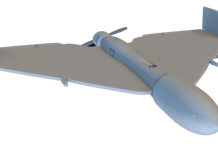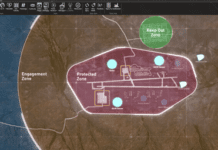This post is also available in:
 עברית (Hebrew)
עברית (Hebrew)
The US Marine Corps is planning to launch a multi-year urban-combat operations experiment this summer. The service is asking defense firms and universities to submit ideas for weapons and military technologies that will improve Marine infantry unit’s effectiveness in combat.
The Marine Corps request is for emerging and mature technologies to be included in an experiment focused on dense urban operations.
The experiment will be a series of experiment sets held between August 2019 and August 2023.
For years, Marine Corps commanders have stated the importance of being able to fight in large cities, but this effort may be the most far-reaching attempt to ready the troops for that fight.
The main goal of the experiment is to find improved technologies that support Marine troops and its subordinate elements. Military.com reports that the service is looking for weapon technologies that will provide units “mass and precision fires solutions” designed to penetrate urban structures “with or without destruction.”
Furthermore, being able to obscure systems and troops is considered an essential need for the experiment. As well as being able to damage and destroy enemy holdings.
A few other weapon technologies that could be relevant for the experiment are “fire and forget” systems and systems with adjustable range that are also effective at closer ranges. Indirect fire systems that can be easily set up that suppress or destroy enemies are highly desired and precision fires that can track moving targets are critical.
The experiment isn’t only so that the Marine Corps can obtain new weapons, sensing capabilities that improve situational awareness are also in high demand. The service is looking for technologies that can sense, identify and classify humans, equipment, vehicles, and infrastructure. Among those capabilities the technology should also be able to distinguish between friendlies, enemies, and civilians. Facial recognition and biometrics are also desired capabilities.
For the extended support of distributed smaller units, advanced command and control technologies with the capability of penetrating urban architecture and subterranean features will also be needed.
Finally, the service is interested in technologies that improve a soldier’s mobility in a populated city. Anything that can help the soldier climb walls, move through crowds, and anything that can help lighten the soldiers carrying burden.
Based on their performance in this upcoming August, firms may be asked to take part in future experiments where their proposed technology may be tested through more complex and advanced combat environments.


























